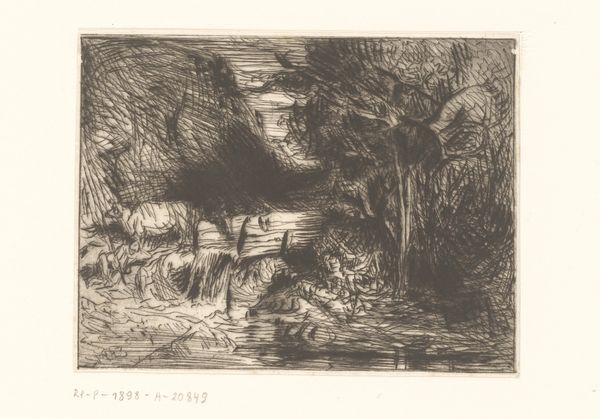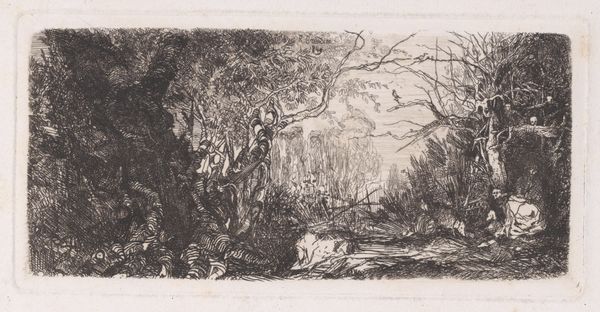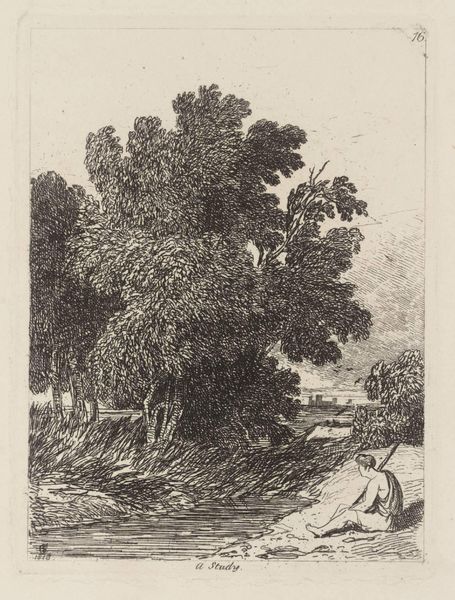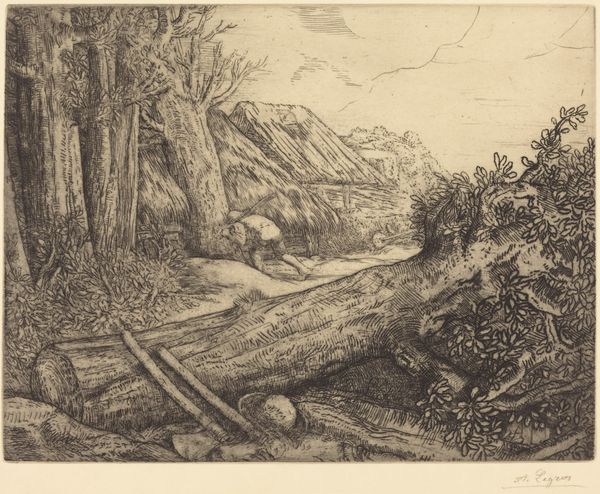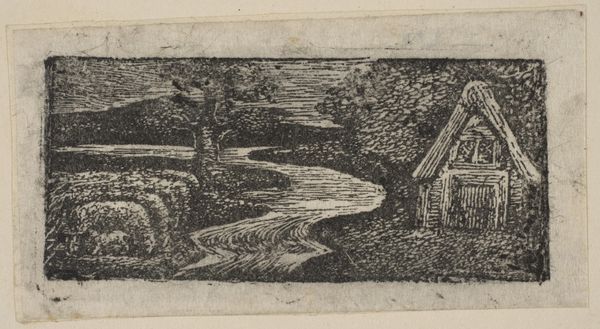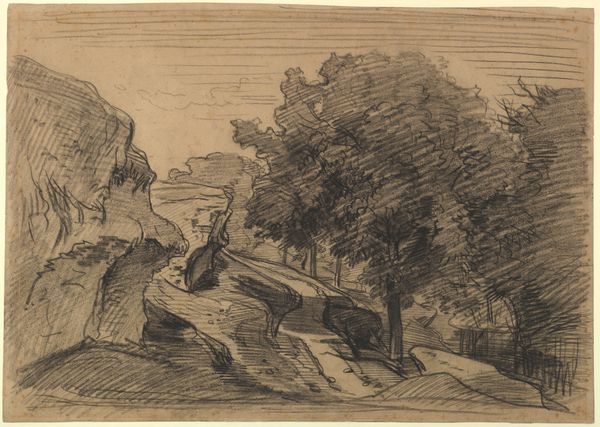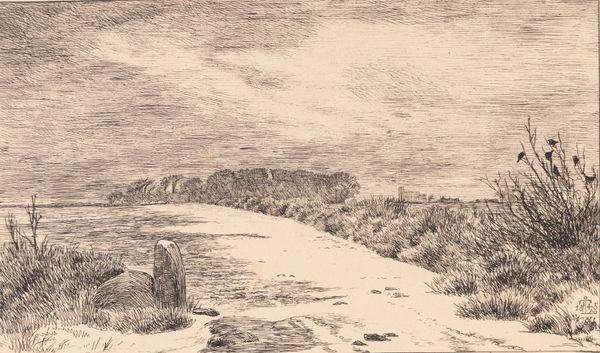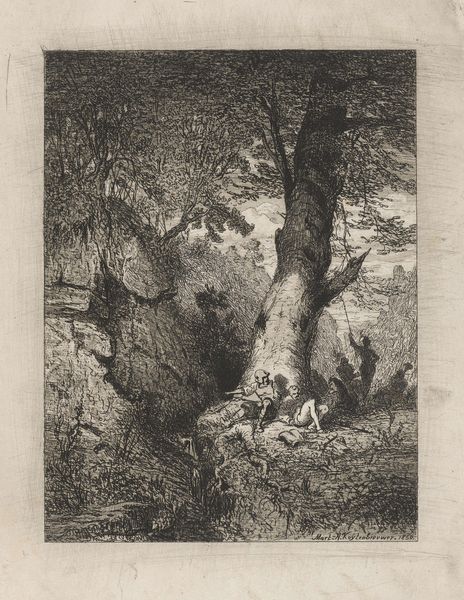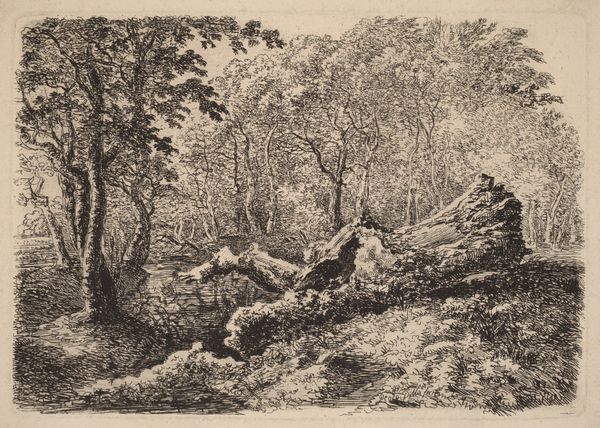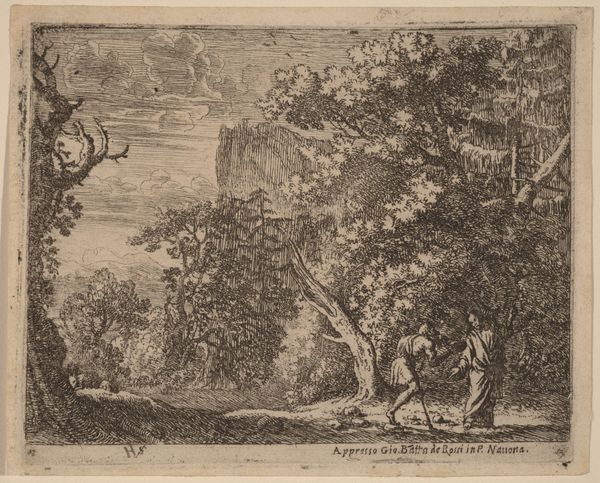
drawing, print, etching, ink
#
drawing
#
ink drawing
# print
#
impressionism
#
etching
#
landscape
#
ink
Copyright: National Gallery of Art: CC0 1.0
Editor: This etching, titled "Aux Environs de Menton," is by Adolphe Appian. The intricate linework creates a striking landscape. There's a figure on horseback in the distance that makes the image so interesting. How do you interpret the composition of this landscape? Curator: Observe how Appian utilizes varying densities of etched lines to delineate spatial relationships. The foreground, rich with textural detail, contrasts with the comparatively sparse rendering of the background elements. Editor: It seems like a scene that could almost be real but also oneiric. How would you describe his technique and materiality here? Curator: Note the deliberate use of hatching and cross-hatching, building tonal depth and suggesting form. Consider, too, the inherent materiality of the etched line, a physical groove impressed upon the metal plate. Appian skillfully exploits this directness. Editor: So the process itself informs the aesthetic quality of the artwork? Curator: Precisely. The etching process is integral. The way the ink settles within these lines produces a unique visual texture distinct from other drawing methods. How does this process contribute to the atmospheric mood you perceive? Editor: I suppose the darkness of the etched lines, coupled with their density, creates a mood both detailed and pensive, more suggestive of form. Thank you. Curator: The interplay between light and shadow in the density and direction of line is something I find significant as well. I found the texture and use of detail in this etching to be very inspiring.
Comments
No comments
Be the first to comment and join the conversation on the ultimate creative platform.
